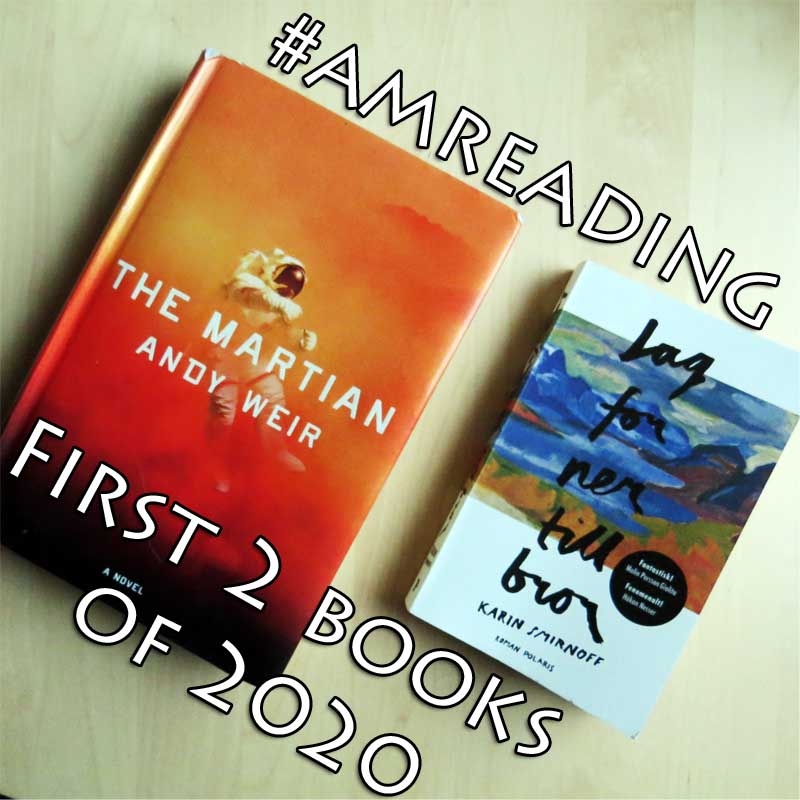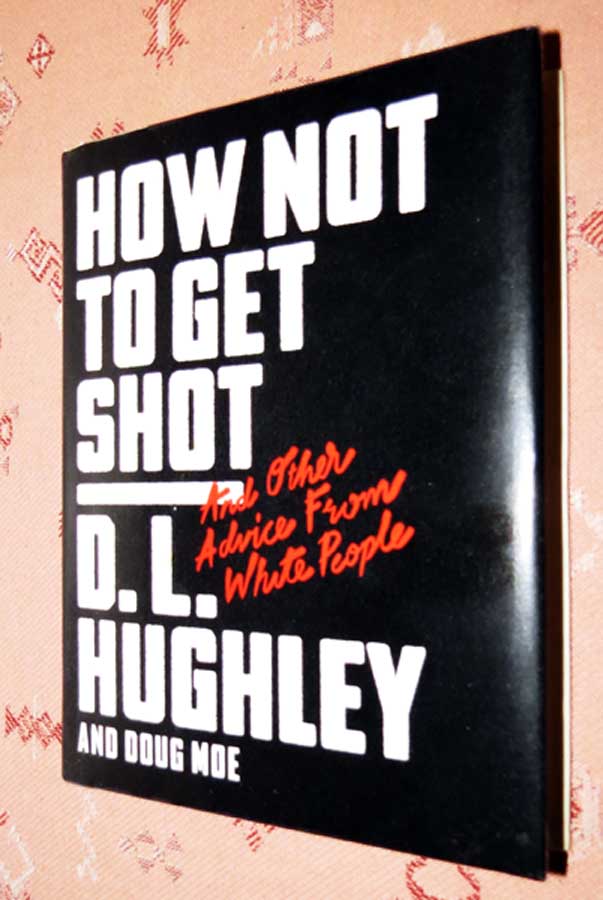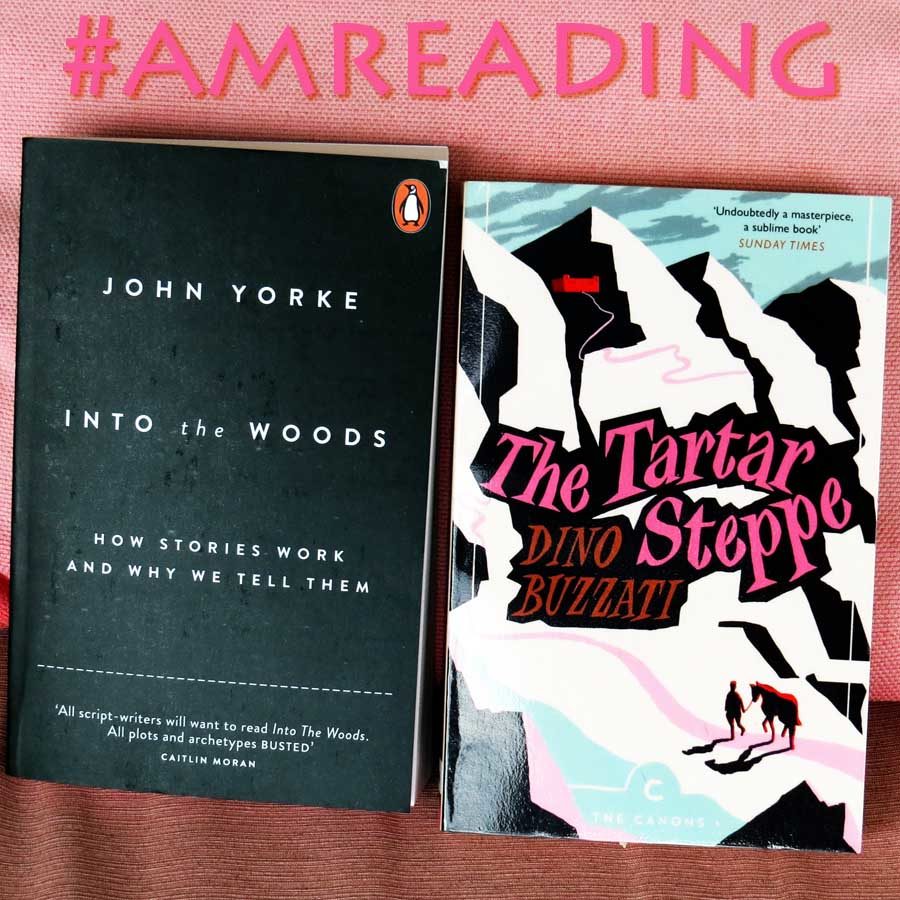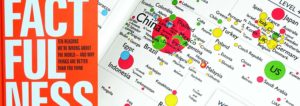Halfway through February and I’m doing quite well in terms of keeping my book reading resolution for the year. We are seven weeks into the year and I have completed seven titles.
A Story from Northern Sweden
The first book I read this year was in Swedish. Jag for när till bror by Karin Smirnoff. The Swedish language Wikipedia tells me the rights have been sold to an English publisher. However it seems, the book isn’t yet published (or perhaps not even translated). A literal translation of the title would be “I go down to Bror”. This misses the pun – bror, in Swedish, being both a man’s name and “brother”. The story is the first in a series about the protagonist, Jana Kippo, following her return to the rural north of Sweden.
In this novel Jana returns to her childhood home in a village called Smalånger (literally: slim regret). There she finds her twin brother, Bror, an alcoholic, and the whole village still sunk in contemplation of ancient grievances and the consequences of misery. The book is written in a style that imitates the dour, monosyllabic dialogue of Swedish Norrland. Also it eschews all capitalisation except at the beginning of sentences. Personal names are run together as janakippo or ingelahansson. This can be irritating. But the story of Jana’s gradual rediscovery of her family background and her unpicking of the interwoven stories of the other inhabitants of Smalånger is compelling and I didn’t find it difficult read.

A Story from Mars
My second book of the year I started reading while I was about halfway through Smirnoff’s novel. It was a complete contrast.
If I remember right, The Martian started life as a serial on Andy Weir’s website before transitioning to a self-published book. And, of course, it became a film with Matt Damon in the title role. A good film and, as it turned out, a very gripping book. I completed both The Martian and Jag for när till bror at roughly the same time.
The Martian was a library loan, picked up because I saw it displayed. When I returned it, I decided I wanted a detective story as my next read. So I took a look along the English crime shelves. Two books on display caught my eye: How Not to Get Shot and The Walkers of Dembly. These were my next two reads.
Crime Stories (I): USA

The first, by DL Hughley (and Doug Moe), turned out to have been mis-shelved. How Not to Get Shot is a bitter, comic book of “advice” for black people in the USA. It takes as its starting point the disproportional number of black men who are annually shot and killed by US police. The subtitle: And Other Advice from White People was printed on the cover, but in red ink on black. Now, I’m colour-blind. Literally. I have difficulty distinguishing tones of red, green and brown, but no problem at all in seeing the colour of a person’s skin. Anyway, this meant I didn’t actually notice the subtitle until I got the book home.
DL Hughley, turns out to be a stand-up comic and radio chat show host. (I listened to a couple of his podcasts after finishing the book.) A funny man with a dry, ironic humour. I found, as so often with American humour about current affairs, that there were a lot of references to US conditions and individuals that were incomprehensible to me. Nevertheless, I was still able to follow and enjoy much of the book.
Crime Stories (II): Not Agatha Christie
Hughley’s book, though, was immensely preferable to MC Beaton’s The Walkers of Dembly. I picked this up because it caught my eye and because I had just read an obituary for MC Beaton. It seems she disliked being described by her publishers as “The Queen of the Village Mystery”. A very prolific author under a variety of pseudonyms, she has apparently produced more than 30 volumes about Agatha Raisin of which The Walkers of Dembly is one. (Agatha Raisin – of course it’s a marketing ploy aimed at Agatha Christie readers. MC Beaton writes well, but she’s no Agatha Christie.)
I don’t know how I’ve missed Agatha Raisin in all these years, but I am happy to have done so. I found nothing sympathetic in any of the characters of this book. It may be old-fashioned but I think a detective story ought to provide enough clues for the reader to reasonably work out whodunnit before the final dénouement. Instead, many of the characters in The Walkers of Dembly could reasonably have been fitted up for the role of murderer. It seemed to me that MC Beaton just picked on one towards the end of the book. I found it a profoundly unsatisfying read and have no intention of reading any more by her.
(Footnote: one of the commercial TV channels in Sweden has started showing a TV series based on the Agatha Raisin character. I wonder if she works any better on the screen.)
Stories from Somewhere
Returning my two library books, it was a relief to pick up and quickly read through the latest anthology of short stories from The Fiction Desk, Somewhere This Way. I’m not sure whether I ought to count that as one of my books. It’s a magazine bound like a fairly thin paperback. But why not? It runs 107 pages and has eight stories by seven authors. Besides, I have ambitions to one day have one of my stories published in a Fiction Desk anthology.
A Story of a Wasted Life
The two remaining books read so far were both recommended by an Italian friend. (Waves at Lorenzo.) The second of these was Dino Buzzati‘s The Tartar Steppe, a Kafkaesque story from 1939. It’s about a man whose life runs away while he follows his duty as a soldier. I wasn’t sure I was going to like this when I started, especially after struggling with and failing to complete The Unconsoled last year. But whereas Kazuo Ishiguro’s tome seems to get stuck in a bad-dream loop, Buzzati’s story has a logical structure and gets somewhere. Even if the place it gets is only to the recognition that the protagonist, Giovanni Drogo, has wasted his life following the rules and regulations he has been unwilling to challenge.

How Stories Work
The final book, and one that I think will be with me longer than any of the others, is John Yorke’s analysis of story writing, Into the Woods. About this time last year I was ploughing through Robert McKee’s Story. I found much of value in Story. Still, I couldn’t shake off the feeling that, despite his protests to the contrary, McKee is pushing the idea that all stories correspond to a specific formula.
Even if McKee isn’t pushing that, I’m certain that a lot of people who read Story, and go on to write their own interpretations of it, are. It was a great relief to read in the introduction to Into the Woods…
Did God decree an inciting incident should occur on page 12, or that there are 12 stages to a hero’s journey? Of course not: they’re constructs. Unless we can find a coherent reason why these shapes exist then there’s little reason to take these people [like Robert McKee] seriously. They’re snake oil salesman, peddling their wares on the frontier.
It took me 13 days to read the whole of Into the Woods: How Stories Work and Why We Tell Them. I’m going to have to read it again. It’s dense, but there’s a lot of good meat that deserves picking over.
Anyway, those were my first seven books of the year. What have you been reading?




